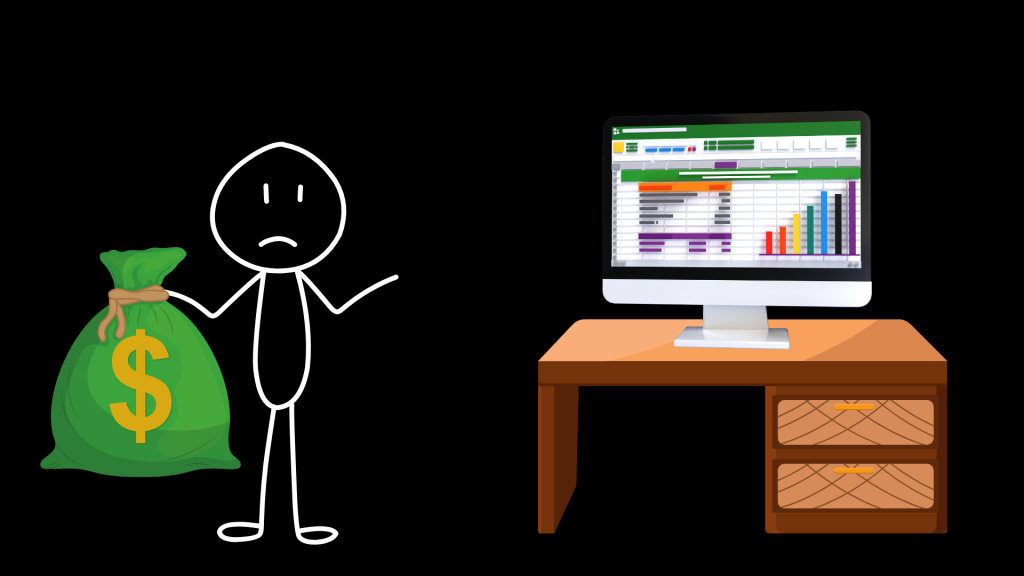If there’s one thing guaranteed to make your eyes glaze over faster than watching paint dry, it’s budgeting. You know, that thing where financial “experts” expect you to track every single penny like you’re some kind of accountant with nothing better to do than record that you spent $3.47 on a coffee that wasn’t even that good.
“Just use a spreadsheet!” they say, as if your life’s ambition is to become one with Excel. “Track every expense!” they insist, as if you don’t already feel bad enough about that random 2 AM Amazon purchase you made after two glasses of wine.
Well, I have fantastic news for the spreadsheet-averse among us: You can actually manage your money like a responsible adult WITHOUT documenting every stick of gum you buy. It’s called the Anti-Budget, and it’s about to change your financial life without making you want to throw your computer out the window.
Why Traditional Budgeting Makes You Want to Scream
Let’s be real about traditional budgeting for a second. You start with good intentions. You create beautiful color-coded categories. You download that app everyone’s talking about. And then, approximately nine days later, you realize you’ve created a part-time job for yourself that pays exactly zero dollars.
Traditional budgeting fails because:
- It focuses on restricting rather than enabling
- It creates a weird shame spiral around normal spending
- It requires more maintenance than that plant you’ve killed three times
- It’s about as fun as watching C-SPAN reruns
No wonder 73% of people abandon their budgets faster than dating apps after a bad match.
Enter the Anti-Budget: Financial Freedom for the Rest of Us
The Anti-Budget flips traditional budgeting on its head. Instead of tracking where every dollar goes, you just need to know where a FEW dollars go. It’s like Marie Kondo for your finances—keep the important stuff, don’t worry about the rest.
Here’s how it works in three ridiculously simple steps:
Step 1: Pay Your Future Self First (The 20% Rule)
The moment money hits your account, immediately transfer 20% to savings and investments. Not when you “get around to it.” Not after you “see what’s left.” FIRST. Before your grubby little fingers can find their way to the Uber Eats app.
Set up automatic transfers so this happens without you having to do anything. Because let’s face it—if it requires you to take action, there’s a 90% chance it’s not happening.
This 20% covers your emergency fund, retirement, and any big goals like “finally moving out of that apartment where the neighbor practices bagpipes at 5 AM.”
Step 2: Cover Your Non-Negotiables (The 50% Rule)
Next, make sure your essential bills don’t exceed 50% of your income. This includes:
- Housing (rent/mortgage)
- Utilities
- Groceries (actual food, not the fancy cheese that costs more than your hourly wage)
- Transportation
- Minimum debt payments
- Insurance
- Basic phone/internet
If these essentials exceed 50% of your take-home pay, you’ve got three options: increase your income, decrease your fixed expenses, or continue living in denial. I recommend the first two.
Automate ALL of these payments. Your memory is about as reliable as public WiFi, so don’t trust it.
Step 3: Spend the Rest Guilt-Free (The 30% Rule)
Here’s the beautiful part: the remaining 30% is your “whatever fund.” Coffee, takeout, clothes, concert tickets, that weird hobby you’re into—whatever floats your boat. You can spend this money WITHOUT TRACKING IT.
gasp
Yes, you read that correctly. As long as you don’t exceed that 30%, you don’t need to justify or document where it goes. Want to blow it all on fancy coffees? Go for it. Need new shoes? Buy them. The only rule is that when it’s gone, it’s gone—no dipping into your savings or essentials.
Why This Actually Works Better Than Obsessive Tracking
The Anti-Budget works because it addresses the real problem with money management: sustainability.
Sure, you COULD create a system where you track that you spent $7.42 on lunch and then feel bad about it. Or you could create a system that ensures the important stuff is handled, and then get on with your life.
The psychological freedom of not having to scrutinize every purchase is enormous. It’s the difference between feeling like you’re on a financial diet versus having a sustainable financial lifestyle.
Plus, when the important stuff is automated, your willpower doesn’t enter the equation. And let’s be honest—your willpower has the consistency of a Netflix commitment to a new series.
The Secret Benefit: You’ll Actually Save MORE
Here’s the irony: people on the Anti-Budget often end up saving MORE than dedicated budget-trackers. Why? Because they’ve structured their finances to make saving the default, not an afterthought.
Traditional budgeters often save “what’s left”—which, after a tough month, can be nothing. Anti-budgeters save first, which means savings happen regardless of whether you had a moment of weakness involving online shopping.
How to Get Started Without Having an Existential Crisis
- Calculate your monthly take-home pay
- Set up an automatic transfer of 20% to savings/investments
- List your essential expenses and make sure they don’t exceed 50%
- Enjoy spending the rest without documenting it like you’re preparing for a financial audit
That’s it. No apps. No spreadsheets. No spending thirty minutes trying to categorize Target purchases because honestly, who knows what you actually bought there.
The Anti-Budget gives you financial security without the tedium. It’s like having a personal trainer who only makes you do the exercises that actually matter, instead of making you do 100 burpees just because they enjoy watching you suffer.
So ditch the spreadsheets, stop categorizing your coffee habit, and embrace the Anti-Budget. Your future self will thank you—and so will your sanity.
Because sometimes, the smartest money move is doing less, not more.
